Attaching Running Boards: A Comprehensive Guide on Different Methods
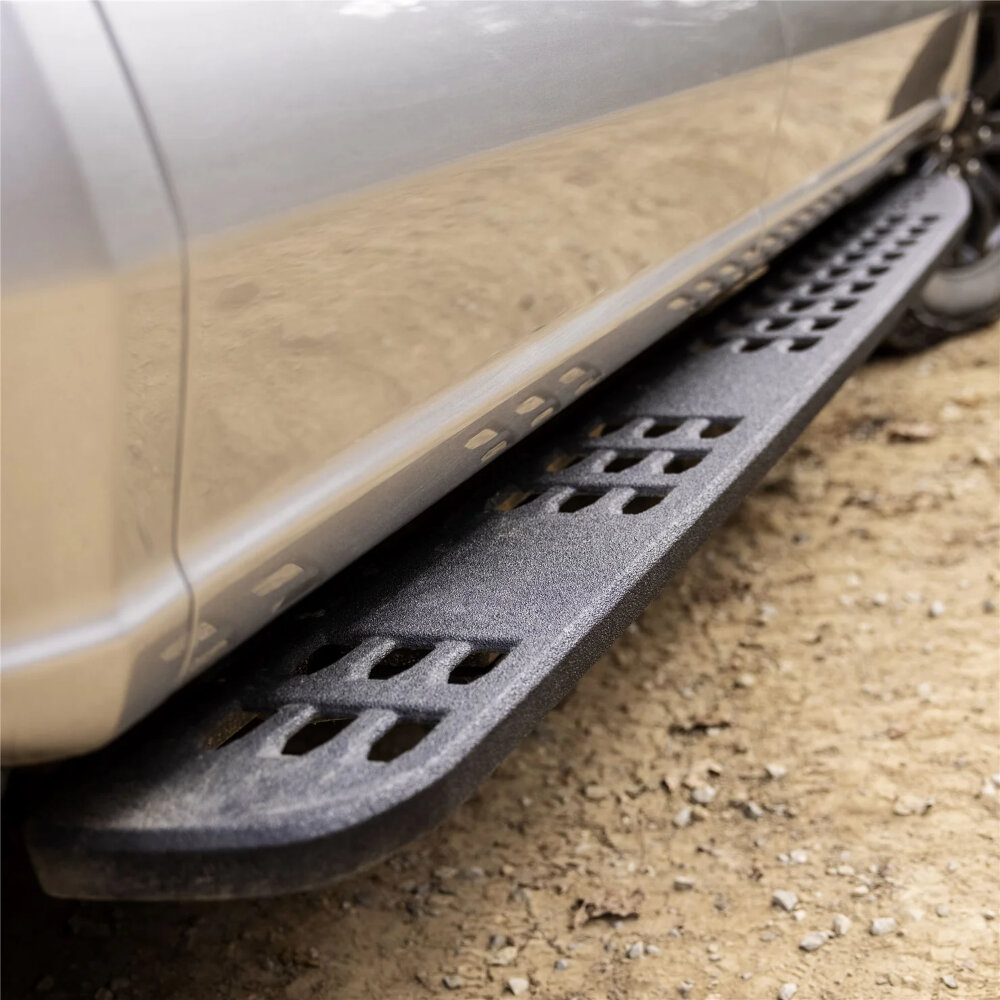
Running boards are a great addition to any vehicle, as they provide a practical and stylish solution for entering and exiting the car. These boards are typically mounted on the sides of the vehicle and can significantly enhance the overall appearance of the car. However, installing running boards can be a daunting task, especially if you lack the necessary skills and knowledge. Fortunately, there are several different methods to attach running boards, each with its own set of advantages and disadvantages. This comprehensive guide will explore the various methods for attaching running boards, including the use of brackets, bolts, adhesive tapes, and welding. We will delve into the pros and cons of each method, highlighting the key considerations that car owners should take into account when selecting the most suitable method for their specific needs. Whether you are looking to install running boards on your truck, SUV, or sedan, this guide will provide you with the information you need to make an informed decision and achieve a professional-looking installation.
Running boards or nerf bars are vehicle accessories that are attached to the side of pickup trucks, SUVs, and other vehicles. They serve as a step to make it easier for passengers to climb in and out of the vehicle, especially for individuals with mobility issues or those who have difficulty getting in and out of tall vehicles. Running boards are also important for protecting the vehicle’s exterior from damage caused by rocks, debris, and other road hazards. They can also enhance the overall appearance of the vehicle, giving it a more rugged and stylish look. Installing running boards is a relatively easy process, and there are different methods that can be used depending on the type of vehicle and the preferences of the owner.
Attaching running boards correctly is of utmost importance, as it not only enhances the aesthetics of the vehicle but also improves its functionality. Running boards act as a stepping platform for passengers, especially for those with mobility issues, and they also protect the vehicle’s body from debris and dirt. Therefore, if the running boards are not attached correctly, they may become loose, causing potential hazards for passengers, damaging the vehicle’s body, and reducing its lifespan. Moreover, incorrect installation can also result in rattling noises and vibrations, which can be annoying and distracting while driving. Therefore, it is crucial to follow the comprehensive guide on different methods of attaching running boards to ensure that they are securely fastened and provide the desired functionality and aesthetic appeal.
Method 1: BoltOn Running Boards
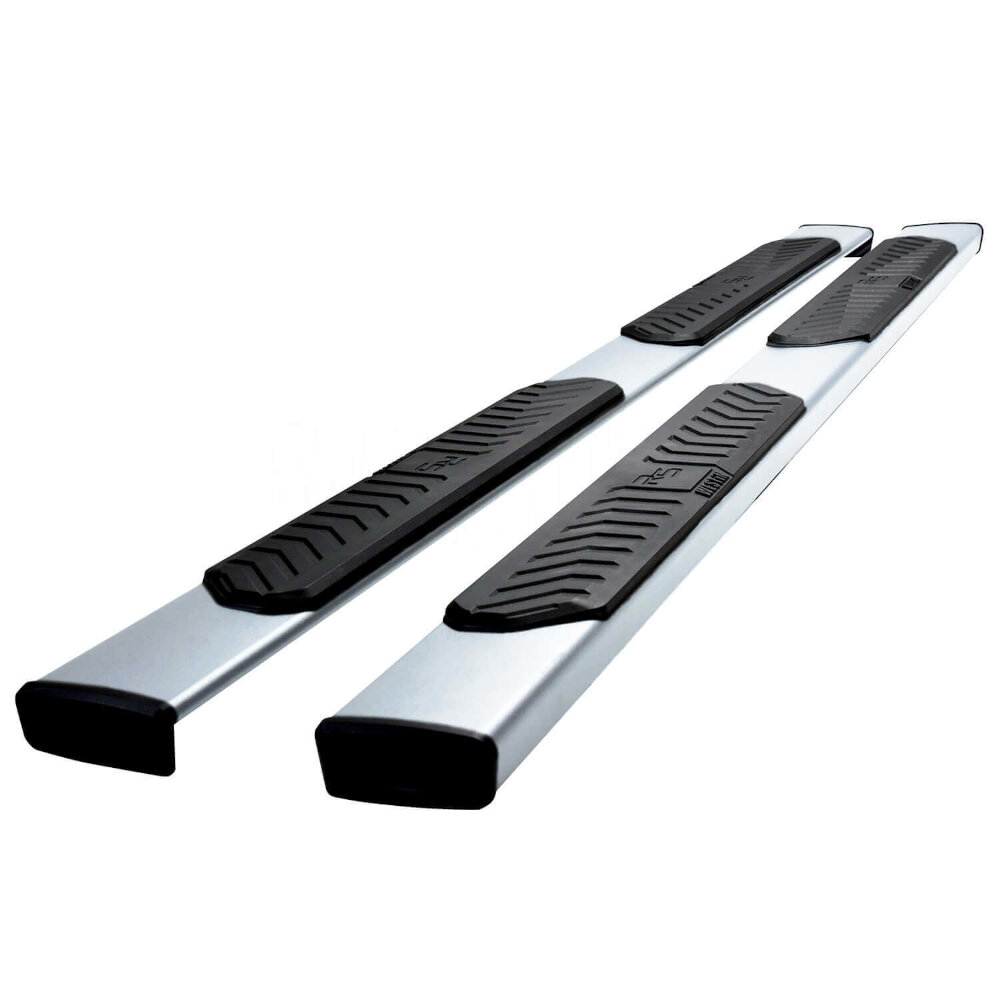
Running boards are a great addition to any vehicle as they provide several benefits. Bolt-on running boards are one of the most popular methods to attach running boards to a vehicle. They are easy to install and can be done using simple tools. Bolt-on running boards are designed to bolt directly onto the frame of the vehicle without any additional drilling or modifications. This method is suitable for most vehicles and does not require any specialized knowledge or skills. Bolt-on running boards come in various shapes, sizes, and materials such as aluminum, stainless steel, or plastic. They are durable and can withstand all weather conditions. Moreover, they add an aesthetic appeal to the vehicle, giving it a sleek and modern look. Bolt-on running boards also provide a safe and convenient way to enter and exit the vehicle, especially for children, elderly people, and those with mobility issues. They also help protect the vehicle from scratches and dings that may occur when entering or exiting the car. Overall, bolt-on running boards are an excellent investment for any vehicle owner looking to improve their vehicle’s functionality and appearance.
Bolton running boards are an easy and convenient way to add step support to your vehicle. These running boards are designed to attach to the underside of your vehicle using a set of bolts and brackets, providing a secure and stable platform for you to step on when entering or exiting your vehicle. Bolton running boards come in a variety of materials, including aluminum and steel, and are available in many different styles and finishes to match the look of your vehicle. With their simple and straightforward installation process, bolton running boards are an excellent choice for anyone looking to add a touch of style and functionality to their vehicle.
Attaching Bolton running boards to your vehicle can be a great addition, but it’s important to make sure they are securely installed. To begin, gather all necessary tools and parts, including brackets and bolts. Next, remove any existing running boards or trim pieces. Position the brackets onto the vehicle’s frame and attach them using the bolts. Once the brackets are secured, attach the running boards onto the brackets using bolts. It’s important to tighten all bolts evenly to avoid any unbalanced weight distribution. Finally, test the running boards for stability and adjust as needed. With these steps, you can confidently attach Bolton running boards to your vehicle for added convenience and style.
Bolton running boards are a popular choice among car enthusiasts for their easy installation and durability. One of the main pros of using bolton running boards is that they can be easily attached to the vehicle without the need for any drilling, welding, or cutting of the frame. This makes them a convenient and cost-effective option for those who want to add some extra protection and style to their car. However, one of the cons of using bolton running boards is that they may not be as secure as other types of running boards that are attached using more permanent methods. They may also limit ground clearance and reduce the vehicle’s off-road capabilities. Additionally, they may not be as aesthetically pleasing as other types of running boards that are custom-fitted to the specific make and model of the vehicle.
Method 2: WeldOn Running Boards
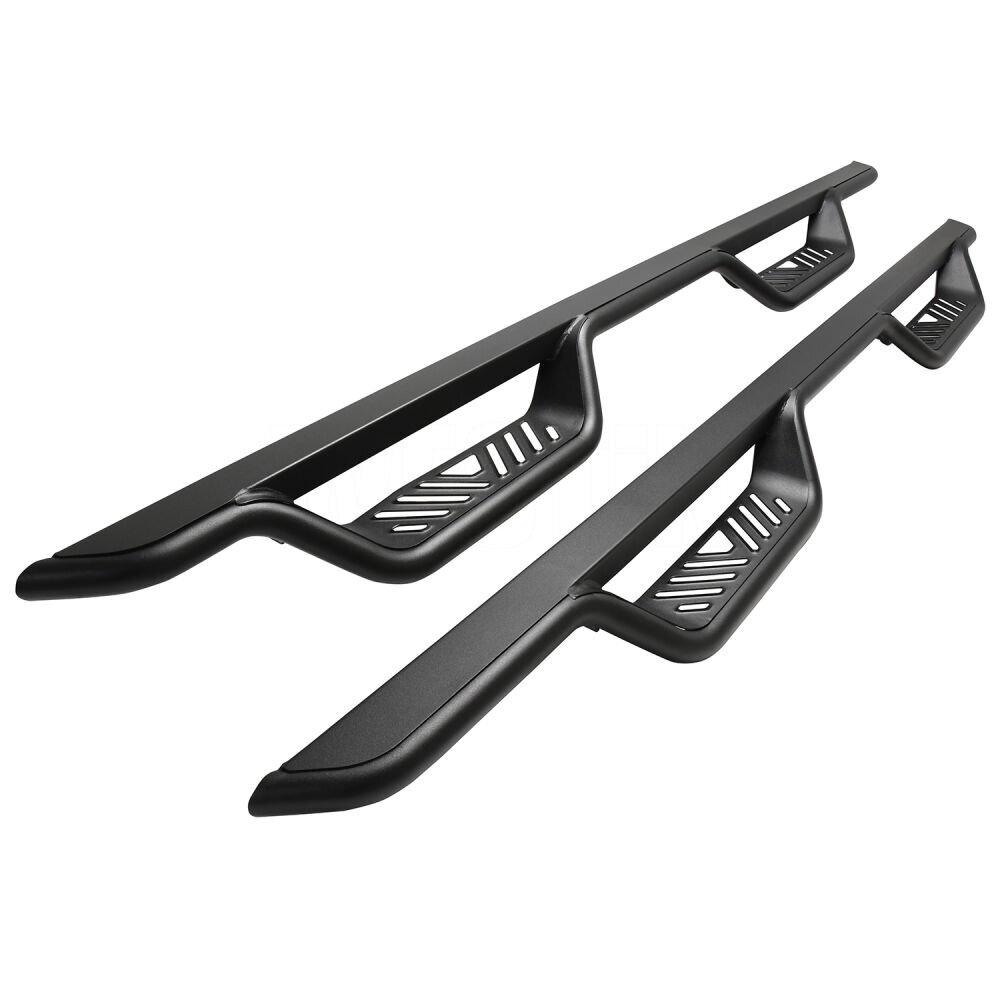
Method 2: WeldOn Running Boards is a popular method that involves welding the running board brackets to the vehicle’s frame. This method is known for its durability and strength, making it a preferred option for heavy-duty vehicles. WeldOn Running Boards are an excellent choice for off-road vehicles, as they can withstand harsh terrains and rough usage. This method requires a skilled welder to attach the brackets to the vehicle’s frame, ensuring that the running boards are securely mounted. A major advantage of this method is that it provides a seamless look with the vehicle’s body, giving it a sleek appearance. However, it is important to note that once the brackets are welded, they cannot be removed without damaging the vehicle’s frame. Therefore, it is crucial to ensure that the running board brackets are placed correctly before starting the welding process. Overall, WeldOn Running Boards are a reliable option for adding extra functionality to your vehicle while also enhancing its appearance.
Weldon running boards are aftermarket accessories that can be attached to vehicles to provide a sturdy and convenient step for passengers entering and exiting the vehicle. These running boards are made of durable materials such as aluminum, stainless steel, or fiberglass, and are designed to withstand harsh weather conditions and heavy use. They come in various sizes and styles to match the look and functionality of different types of vehicles, from trucks and SUVs to sedans and crossovers. Installing Weldon running boards can enhance the overall appearance of the vehicle and provide added safety and convenience for drivers and passengers alike.
Attaching Weldon running boards is a straightforward process that can be accomplished with basic tools and some patience. First, clean the area where the running boards will be attached thoroughly. Next, position the brackets on the running boards and align them with the pre-drilled holes on the vehicle’s frame. Secure the brackets in place with bolts and nuts, and use a torque wrench to tighten them to the manufacturer’s specifications. Finally, attach the running boards to the brackets with screws or bolts, and adjust them to ensure they are level and flush with the vehicle’s body. With this step-by-step guide, attaching Weldon running boards can be a hassle-free job, providing both functionality and style to your vehicle.
Weldon running boards are a popular choice among vehicle owners due to their durability and sleek design. One of the major advantages of using weldon running boards is that they provide a sturdy and safe step for passengers to enter and exit the vehicle. Additionally, they enhance the overall appearance of the vehicle and can increase its resale value. However, weldon running boards can be challenging to install, requiring a level of expertise and specialized tools. They can also be expensive compared to other types of running boards, which may not be feasible for some vehicle owners. Furthermore, if not installed correctly, they can cause damage to the vehicle or become loose over time, posing a safety risk. Overall, while weldon running boards offer many benefits, it is important to weigh the pros and cons before deciding if they are the best option for your vehicle.
Method 3: ClampOn Running Boards
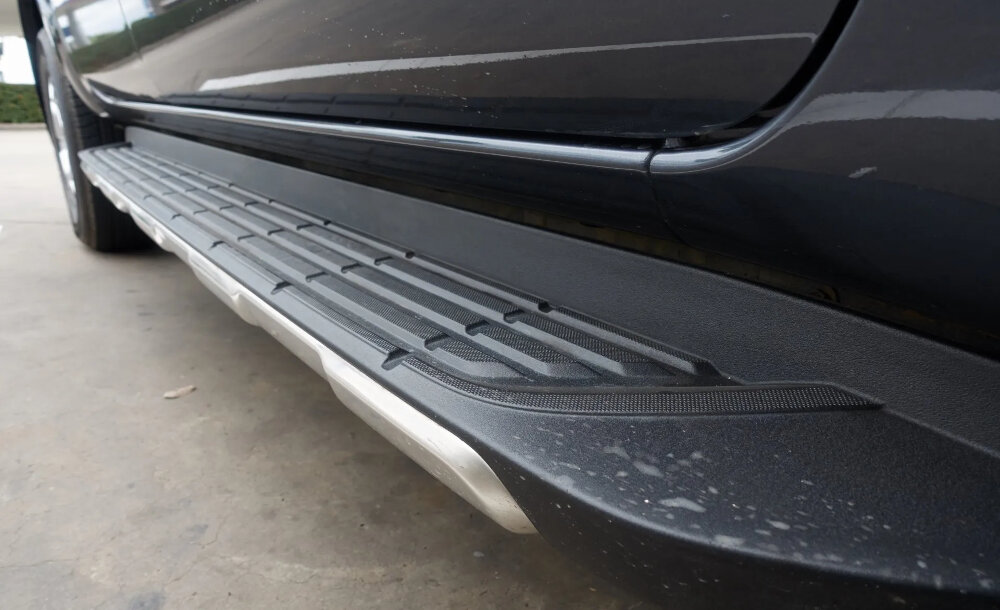
ClampOn Running Boards are a popular and easy-to-install option for attaching running boards to your vehicle. As the name suggests, these running boards are attached to the vehicle’s frame by clamps, eliminating the need for drilling or any other permanent modification. This makes them an excellent choice for those who want to add running boards to their vehicle but want to avoid any damage to the car’s structure. The installation process is straightforward and can be done with basic tools such as wrenches, sockets, and pliers. The running boards come with brackets that fit around the vehicle’s frame, and the clamps securely fasten the brackets to the body. With ClampOn Running Boards, you can have the convenience of easy access to your vehicle while also adding a stylish and practical accessory. One of the advantages of using ClampOn Running Boards is that they can be easily removed if necessary. This means that you can change your running boards quickly or remove them altogether without leaving any permanent marks or damage to your vehicle. Additionally, these running boards are available in a wide range of materials, including aluminum, stainless steel, and plastic. This means that you can choose the material that best suits your needs and budget. ClampOn Running Boards are also available in various sizes and styles, ensuring that you can find the perfect fit for your vehicle. Whether you need a running board for a truck, SUV, or crossover, there is a ClampOn Running Board that will work for you.
Clampon running boards are a popular choice for car enthusiasts looking to enhance the look and functionality of their vehicle. These running boards are designed to be attached to the frame of the car using special clamps, making installation a breeze. Unlike traditional running boards that are bolted directly onto the frame, clampon running boards can be easily removed and reattached, making them a convenient option for those who may need to swap out their running boards frequently. Additionally, these running boards are often made from high-quality materials such as aluminum or stainless steel, ensuring durability and longevity. With their sleek design and easy installation process, clampon running boards are a great choice for anyone looking to upgrade their ride.
Attaching clampon running boards to your vehicle is a simple process that can be completed in just a few easy steps. Firstly, locate the mounting brackets and position them under the vehicle’s frame. Next, use a wrench to tighten the bolts and secure the brackets in place. Once the brackets are in place, place the running boards onto the brackets and align them with the vehicle’s body. Finally, use the provided screws to attach the running boards to the brackets, making sure they are securely fastened. With these simple steps, you can effortlessly add a stylish and functional touch to your vehicle with clampon running boards.
Clampon running boards are one of the most popular types of running boards in the market due to their ease of installation and versatility. One of the main advantages of using clampon running boards is that they do not require drilling, welding, or any other type of permanent modification to the vehicle’s body. This makes them a great option for those who are not comfortable with making permanent alterations to their vehicle. Additionally, they can be easily removed or transferred to another vehicle, which is a convenient feature. However, one of the main drawbacks of using clampon running boards is that they may not be as sturdy as other types of running boards, and they may shake or rattle when driving on rough terrain. Furthermore, they may not provide as much protection to the vehicle’s body as other types of running boards, which could be an issue for off-road enthusiasts.
Method 4: Adhesive Tape Running Boards

Method 4: Adhesive Tape Running Boards is a modern and practical approach to attach running boards to your vehicle. This method requires the use of adhesive tapes with high bonding strength to hold the running board in place. The adhesive tapes used in this method are generally automotive-grade, which means they are capable of withstanding extreme weather conditions and can last for a long time. This method is perfect for those who want to avoid drilling holes in their vehicle or those who have a leased car and do not want to make any permanent changes to the car’s structure. The installation process is quick and easy, and it can be done at home without the help of a professional. One of the significant advantages of this method is that it does not damage the car’s paint or cause any scratches. Moreover, it provides a secure and stable platform for passengers to step on while getting in and out of the car. The adhesive tape used in this method is strong enough to hold the weight of a person and can withstand the pressure of everyday use. However, it is essential to note that the adhesive tape’s effectiveness depends on the quality of the tape used and the surface’s cleanliness where the tape is to be applied. Therefore, it is crucial to follow the manufacturer’s instructions carefully and ensure that the surface is clean and dry before applying the tape to achieve the best results.
Adhesive tape running boards are a popular method of attaching running boards to vehicles. These running boards are typically made of durable materials, such as aluminum or steel, and are attached to the vehicle using a strong adhesive tape. The adhesive tape is applied to the underside of the running board and then pressed firmly onto the vehicle’s surface. This method of attachment is relatively easy and inexpensive, making it a popular choice for many vehicle owners. However, it is important to note that adhesive tape running boards may not be as secure as other methods and may require occasional maintenance to ensure they stay in place. Additionally, it is important to choose high-quality adhesive tape and properly prepare the surface of the vehicle before installation to ensure a strong bond.
Attaching adhesive tape running boards to your vehicle is a relatively simple process that can be completed with just a few tools and some basic knowledge. Firstly, you need to clean the area where the running boards will be attached to ensure that there is no dirt or debris that would prevent the adhesive tape from sticking properly. Next, you should measure and mark out the position of the running boards to ensure that they are level and evenly spaced. Then, you can remove the backing from the adhesive tape and carefully position the running boards in place, applying firm pressure to ensure that they are securely attached. Once the running boards are in place, you can step back and admire the sleek and stylish look they add to your vehicle.
Adhesive tape running boards offer a quick and easy installation process that requires minimal tools and labor. They are also cost-effective and available in a variety of designs, sizes, and colors. However, the downside of using adhesive tape running boards is their durability and reliability. They can easily peel off due to high temperatures, moisture, or rough terrains, leading to safety hazards and damage to the vehicle’s body. Moreover, the adhesive residue left on the vehicle’s surface after removing the running boards can be difficult to remove, requiring additional time and effort to clean. Therefore, it is crucial to consider the vehicle’s usage and environment before choosing adhesive tape running boards as a suitable attachment method.
Running boards are a useful accessory for trucks and SUVs, providing an extra step for passengers to get into the vehicle. There are several methods for attaching running boards to the vehicle, each with its own advantages and disadvantages. The most common method is using brackets that attach to the vehicle’s frame or rocker panel. Another method is using adhesive tape or glue to attach the running boards directly to the vehicle’s body. Bolt-on running boards require drilling holes in the vehicle’s frame or body, which can be a more secure attachment method but can also be more time-consuming and difficult to install. Some running boards are even designed to be installed without any drilling or permanent attachment, using clips or other fasteners to hold them in place. No matter which method is chosen, proper installation is crucial for safety and longevity.
After reviewing different methods for attaching running boards, it is clear that the best option depends on several factors, including the type of vehicle, the material of the running board, and personal preference. For example, bolt-on brackets are a sturdy option for heavy-duty trucks, while adhesive tapes and clips may be more appropriate for lighter vehicles. Additionally, some people may prefer the sleek look of hidden brackets, while others may prioritize ease of installation. Ultimately, it is important to weigh the pros and cons of each method and choose the one that best suits your needs. Regardless of which method you choose, proper installation is crucial for ensuring the safety and longevity of your running boards.
The proper installation of running boards is crucial for both safety and functionality. A poorly installed running board can become a safety hazard, potentially causing injury to passengers or damaging the vehicle. Additionally, a securely attached running board provides a stable surface for passengers to step onto, making entering and exiting the vehicle safer and more convenient. Proper installation also ensures that the running board functions as intended, providing added protection to the vehicle’s body and undercarriage. It is essential to follow the manufacturer’s instructions and use the appropriate tools and hardware when installing running boards to ensure that they are installed correctly and securely. Taking the time to properly install running boards can save time, money, and potentially prevent accidents in the long run.
Conclusion
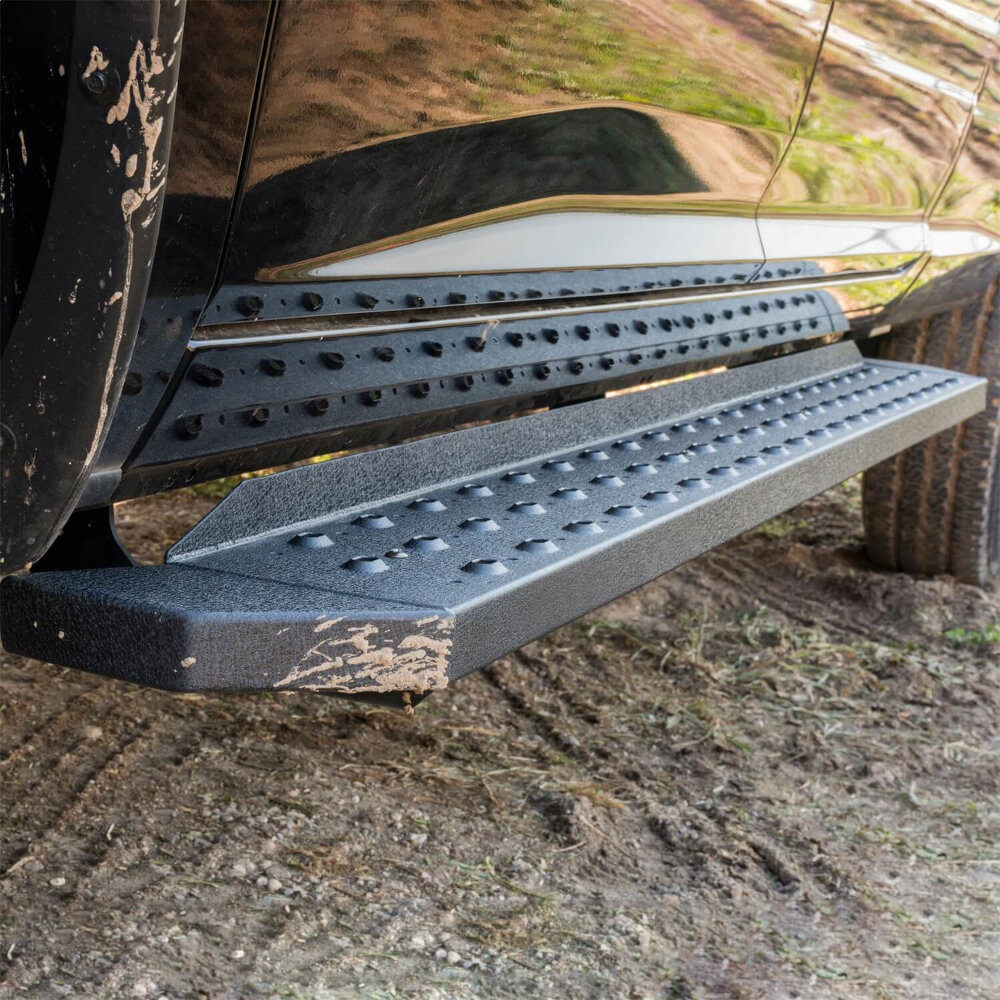
In conclusion, attaching running boards is an important and necessary task for many vehicles, and there are several methods available for achieving this. Whether you choose to use brackets, bolts, or other hardware, it is crucial to ensure that the running boards are securely attached to the vehicle’s frame for maximum safety. Additionally, considering factors such as material, weight capacity, and ease of installation can help you make the best decision for your specific vehicle and needs. By following the comprehensive guide provided, you can confidently attach running boards to your vehicle and enjoy the benefits they provide.

